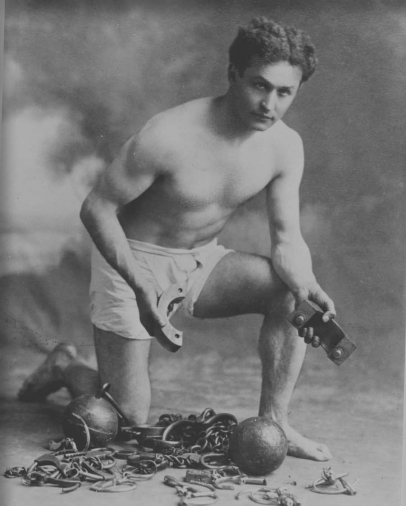There Wasn’t Much Magic in Houdini’s Recipes
Reviewed by Jon Gast
It’s not often you come across a cookbook that is both historically significant, contains humor and borders slightly on the unusual. The Stag Cook Book: A Man’s Cook Book For Men just might be thatbook.
Originally printed in 1922, the cookbook is not unusual because of its age. After all, many of us still rely on the recipes that our grandmothers and even great-grandmother s have passed down to us.
What’s interesting about this particular book is how it’s compiled and, in the process, has made the original issues relatively expensive. The re- printed version of the book can found at many outlets at a very reason- able price. Such is how I secured a copy.
Why I purchased a copy stems from some research I did on one of Northeastern Wisconsin’s most famous and beloved native sons. Now, Harry Houdini wasn’t born in Appleton, but the world-famous illusionist liked to think he was, and Appleton has been more than willing to em- brace that notion.
Born Erich Weisz in Budapest, Hungary, Houdini’s family settled in Wis- consin. As a teenager, Weisz eventually set out for New York City with his father. The rest, of course, is history.
While researching Houdini I came across this book that asked approxi- mately 100 of the country’s most famous men of the era to submit a fa- vorite recipe.
It provided a glimpse into Houdini’s dietary preferences along with other such notables of the time such as Warren Harding, Charlie Chaplin, John Philip Sousa and Douglas Fairbanks.
All of these seemed to lean to more domestic fare as Fairbanks offered up a bread tart recipe, Chaplin a steak and kidney pie, Sousa his own fa- vorite style of spaghetti, while Harding shared a waffles mixture.
True to my own heart, Houdini was a deviled eggs man that he paired with a scalloped mushroom dish.
It seemed a rather simple offering considering what researchers have found to be a man of more lavish tastes.
In his biography of Houdini, Houdini: The career of Ehrich Weiss, author Kenneth Silverman writes that Houdini’s wife, Bess, liked to cook and was rather accomplished at it.
“He appreciated the ‘fruit-served breakfast’ she readied for his early
rising before going to sleep herself,” wrote Silverman. “His idea of comfort,” he said, “was to be sitting in an armchair in his library, hearing Mrs. Houdi- ni call up, ‘Young man, your lunch is ready.’”
Silverman also wrote that Houdini and Bess celebrated their 25th wedding anniversary at the Hotel Alexandria in Los Angeles. Apparently also a man of lavish tastes, Houdini presented one of his extrava-
ganzas of hospitality he had become known for. He invited 200 guests to gather in the hotel’s main dining room at one long table for a 10-course banquet, opening with crab supreme and gorging its way through breast of chicken "Virginienne" to strawberry parfait and champagne.
According to Silverman, one of Houdini’s nephews recounts that Aunt Bess told him on another occasion, “I told Houdini ... that he was going to get a special dinner tonight. All his favorites — Hungarian chicken, spatzels and custard bread pudding with bing cherries.”
Stag Cook Book editor C. Mac Sheridan dedicates his book to “that great host of bachelors and benedicts alike who have at one time or an-
other tried to ‘cook something’ and who, in the attempt, have weakened under a fire of feminine raillery and sarcasm only to spoil what, under more favorable circumstances, would have proved a chef-d’oeuvre.”
In his introduction to the book, Robert H. Davis sets a light and humor- ous tone that, in itself helps set this cookbook apart. Undoubtedly, it is just what Sheridan intended.
Referring to the contributors, Davis writes, “This book brings within the reach of all opportunities that up to now have been denied them. Given a first-class stove, a few simple ingredients and a copy of this book, hunger can be abolished wherever English is read.”
HOUDINI’S DEVILED EGGS
The recipe appears rather conventional in its preparation. Why change something that borders on perfection? However, there appears to be one piece of instruction that seems appropriate for a man who was all about presentation on stage.
“Boil the eggs hard,” Houdini begins. “Remove shells and cut eggs in half, slicing off a bit of the ends to make them stand upright,” he contin- ues, offering a twist in presentation I have rarely seen.
He goes on to finish: “Extract yolks and rub them to a smooth paste with melted butter, cayenne pepper, a touch of mustard and a dash of vinegar. Fill the hollowed whites with this and send to table upon a bed of chopped lettuce or water cress, seasoned with pepper, salt, vinegar and a little sugar.”





